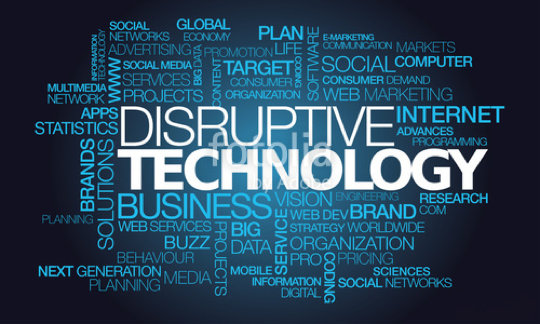Disruptive Innovation In The Marketplace

We are living in a time of disruptive change. Today’s technologies threaten to change how we live and, in some cases, how we make a living. While this is exciting, it is also intimidating; many people believe we won’t be able to adapt to the new technology that surrounds us quickly enough. While technological examples like autonomous vehicles, autonomous drones and artificial intelligence are just entering the public sphere of discussion on a large scale, they are not wholly new. Most of these technologies have been conceptualized and/or have been in development for decades.
In my Fall Quarter NUvention: Transportation (ENTREP 450) course, we discussed the fact that nearly all of the technologies needed for successful deployment of autonomous vehicles and autonomous airplanes and other vehicles are already in place. The biggest stumbling block to rolling out any of these disruptive technologies is the natural resistance of the market to adopt radically new technologies. Adoption curves have been theorized by Elliott Rogers since the 1960s, but the reality of technology adoption is that it is not often mastered by companies, even those that are well known for innovation.
Previously, I worked for a company that was notorious for bringing new technology to market too soon and hence, this company’s new technology failed miserably in the marketplace. In contrast to my employer sits Apple, a company that has become well known for getting the right technology, in the right packaging, to the market at the right time. Though Apple did not invent the laptop computer, (nor the MP3 player, nor the smartphone, nor the tablet computer), Apple succeeded in the market precisely because it packaged these existing products in a way that had mass market appeal.
Henry Ford, as another example, did not invent the automobile — he perfectly packaged the automobile for mass market appeal. Additionally, Elon Musk of Tesla didn’t invent the electric car (the first electric car dates back to the late 1800s, electric cars roamed the streets of New York in 1915), he created an appealing package for the mass market of EVs.
While is it easy to say that radical and disruptive innovation is the only way for a startup business to become successful, chasing a commodity or a commoditized market is rarely a good idea. However, chasing the bleeding edge of technology also has its drawbacks — unless mass market appeal is fully considered when debuting any such innovation. For proof, we can examine why the Motorola Marco, a wireless tablet computer launched a full decade prior to the launch of the IPad, failed and we will see that it didn’t succeed at market for the very reasons that Apple’s IPad did.
